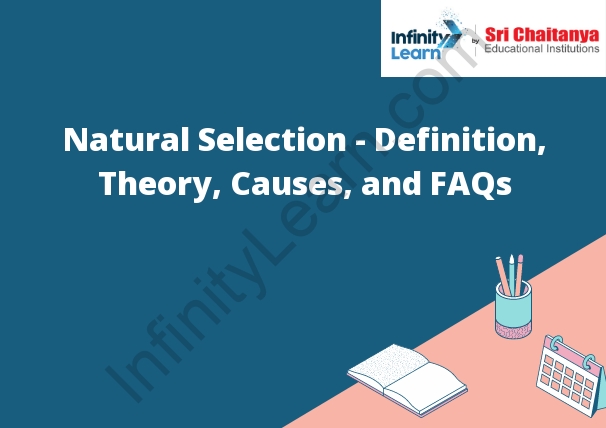Table of Contents
Natural Selection Definition
Natural selection is the process by which organisms with favorable heritable traits are more likely to survive and reproduce in a given environment than those with unfavorable traits.

Theory of Natural Selection
It is process by which organisms with favorable heritable traits are more likely to survive and reproduce in comparison to those with unfavorable heritable traits. The theory of natural selection was first proposed by Charles Darwin in his book. On the Origin of Species, and it is now a cornerstone of modern evolutionary theory.
Darwin Natural Selection
Darwin’s theory of natural selection is the process by which organisms that are better adapted to their environment survive and reproduce more than those that are not as well adapted. Organisms that are better adapted to their environment have an advantage because they are more likely to survive and reproduce. This process leads to the evolution of new species.
Darwin’s Finches
- Darwin’s Finches are a group of 14 to 18 species of small passerine birds. They are found in the Galápagos Islands, and are the best-known example of adaptive radiation. The finches are all very similar in appearance, but have different beaks that are adapted to different food sources.
- The mechanism of evolution by natural selection was first proposed by Charles Darwin in his book. On the Origin of Species, based on his observations of these birds. The finches provided some of the strongest evidence for Darwin’s theory. As they could be seen evolving rapidly to adapt to new food sources.
- The different beaks of the finches are a result of natural selection. The birds with the most effective beaks are more likely to survive and reproduce, passing on their genes to next generation. This results in the evolution of new species, as the beaks become better adapted to the specific food sources available.
Antibiotics or Drug Resistance
Bacteria can become resistant to antibiotics by two mechanisms: natural and acquired resistance.
1. Natural Resistance: Some bacteria are naturally resistant to antibiotics because they have a genetic mutation that makes them impervious to the drug. These bacteria can survive and multiply even in the presence of antibiotics.
2. Acquired Resistance: Bacteria can also become resistant to antibiotics through a process called acquired resistance. This occurs when bacteria come in contact with antibiotics and develop a resistance to them. The bacteria can then pass this resistance on to other bacteria.
Industrial Melanism
When industrial melanism occurs, a mutation in gene that codes for enzyme tyrosinase leads to an overproduction of melanin. This can cause an animal’s coat to become much darker than normal. The mutation is most common in populations of animals that live near urban areas, where pollution is high.
Causes of Variation
- There are many causes of variation in a population. Some of these causes are environmental, while others are genetic.
- Some environmental causes of variation include temperature, humidity, and nutrients in the soil. These factors can all affect the growth and development of a plant or animal.
- Genetic causes of variation include mutations and sexual reproduction. Mutations can occur spontaneously or induce by radiation or chemicals. Sexual reproduction results in new combinations of genes, which can lead to variation in the population.
Weakness of Darwinism
- There are a number of weaknesses of Darwinism. One is that it does not take into account the role of design in the natural world. Another is that it does not account for the origin of life.
- There are a number of weaknesses of Darwinism point out by critics over the years. One of the most glaring weaknesses is the lack of a mechanism by which new species can arise. Darwin himself was well aware of this problem and even admitted that it was a potential weakness of his theory. However, he hoped that future discoveries would uncover a mechanism by which new species could arise.
- Another weakness of Darwinism is its reliance on the principle of natural selection. This principle states that the fittest individuals will survive and reproduce, while the weaker individuals will die off. However, this principle is not always true.
- There are many instances in which the fittest individuals do not survive and reproduce. For example, in a population of animals that is facing a severe drought, the fittest individuals may die off because they cannot find enough food to eat.
- Another problem with Darwinism is that it does not explain how complex organs and systems could have arisen through natural selection. Darwin himself admitted that this was a potential weakness of his theory. However, he hoped that future discoveries would uncover a mechanism by which complex organs and systems could have arisen.
- Finally, another weakness of Darwinism is that it cannot explain the existence of altruism. Altruism is the act of helping another individual, even if it comes at a cost to oneself. For example, a mother bird might feed her chicks even if it means that she will go hungry herself. Darwinism cannot explain why animals would engage in such behavior.
- Overall, there are a number of weaknesses of Darwinism. However, Darwinism is still the most widely accepted theory of evolution.









